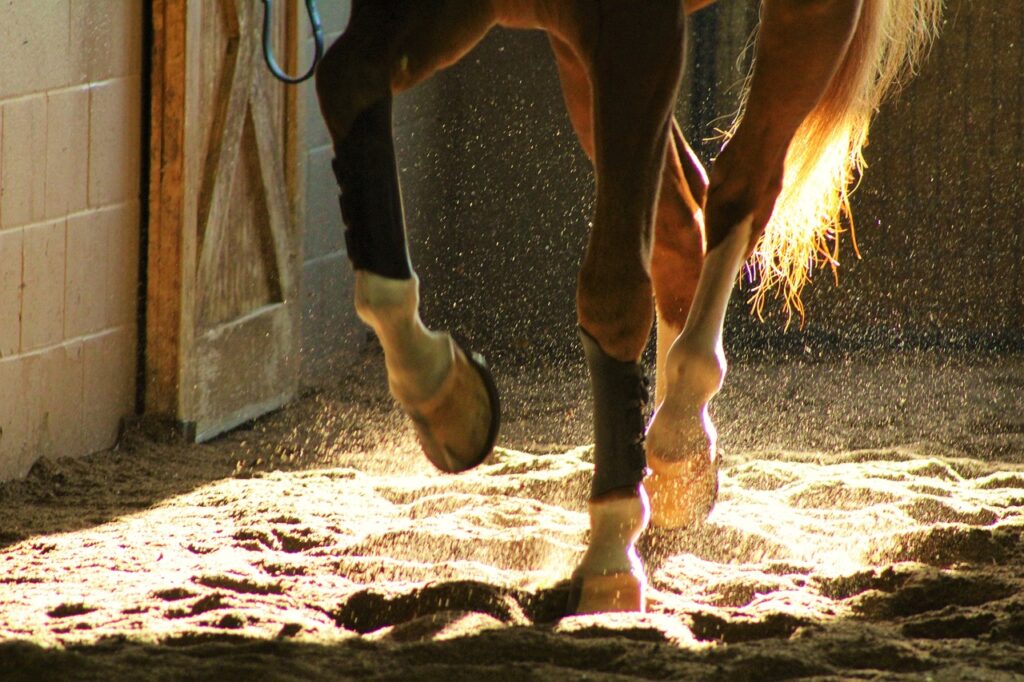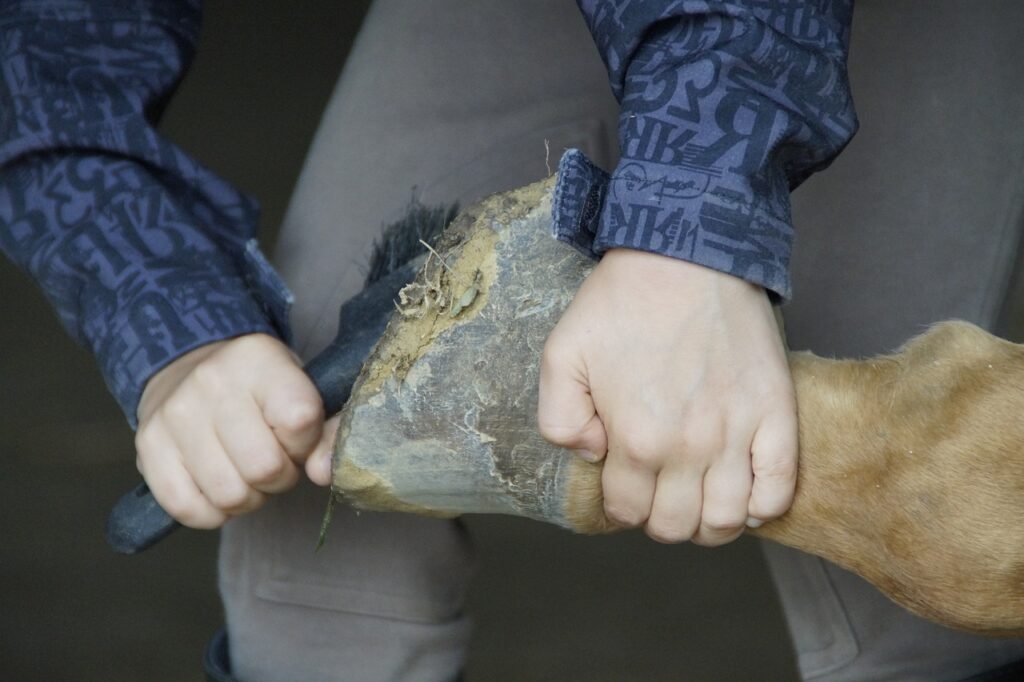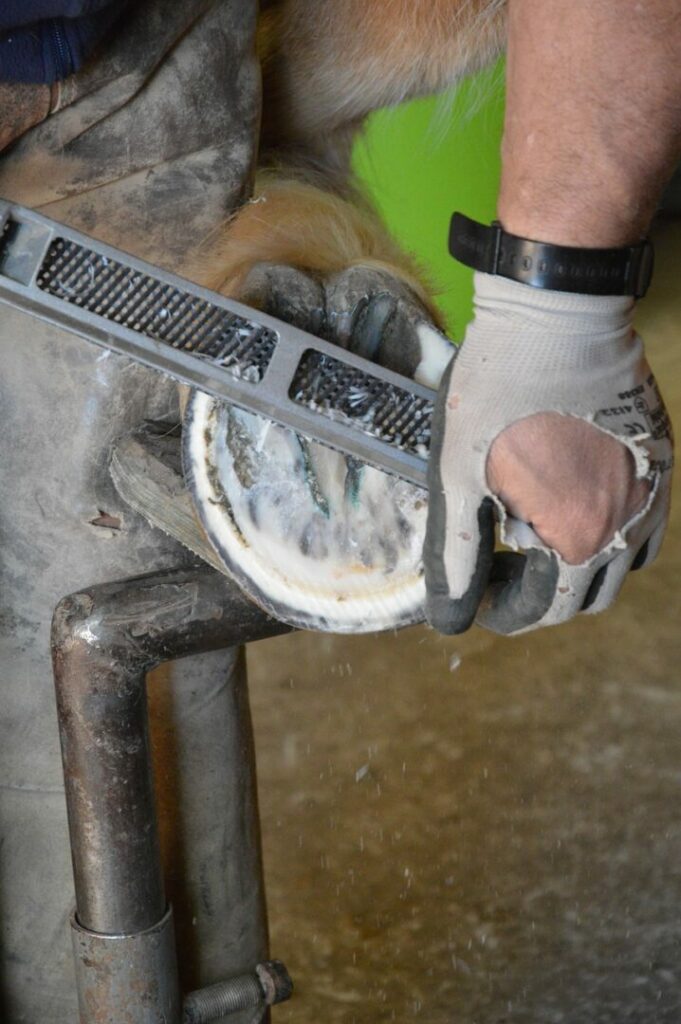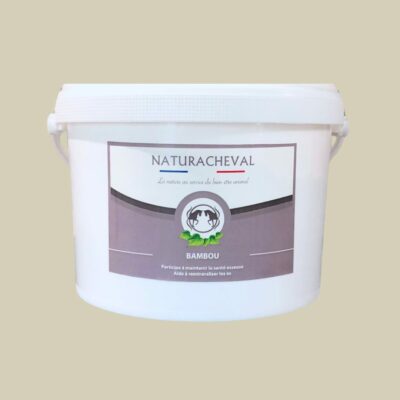Hoof care is part of the Naturacheval range
13 March 2024
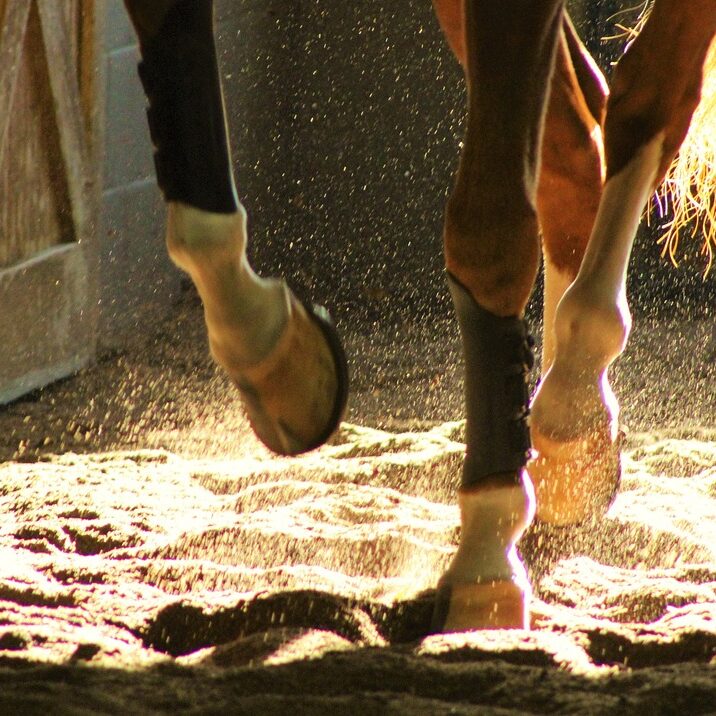
After many requests from you, our customers, we have developed the FOOT CARE category for our equine friends. Always natural and French care, for the maintenance and protection of hooves.
Summary
HEALTHY FOOT: ESSENTIAL
In the equestrian world, a popular maxim states: “No foot, no horse”. The health of a horse’s feet is the cornerstone of their overall well-being, directly influencing their ability to perform, whether in competition, work, or simply leisure. It is essential to provide regular care and to be attentive to the health of the horses’ feet.
The structure of the hoof
To understand the importance of foot care, it is essential to grasp the complexity of the horse’s foot structure. A horse’s foot is designed to absorb shock, provide traction, and support the animal’s weight. It consists of several key parts, including the horn (hoof), frog, foot pad, and foot bones, all working in harmony to facilitate movement and the overall health of the horse.
In contact with the ground, the back of the foot (the heels) spreads out to partially absorb the shock. This part of the foot, composed of the frog, fibers, tendons, cartilage, must be elastic and flexible in order to allow good locomotion.
The horse’s hoof is a complex structure of several keraphyllous tissues ensuring its strength. The inside of the foot is vascularized and innervated.
Regular hoof care
Daily cleaning : It is essential to maintain horses’ feet on a daily basis. The foot should be cleaned before and after each exercise to remove any debris or mud that has accumulated in the hoof. This daily care is crucial and must be part of the rider’s and/or owner’s routine to ensure good hygiene of the horse’s feet, to prevent infections and to monitor the presence of foreign bodies or injuries.
Hydration in summer: Horses’ feet need to be hydrated and should be kept at an optimal humidity level to prevent drying out and cracking. After cleaning the foot, in summer, it is recommended to shower the hooves before applying an ointment, so that the water will be able to remain in contact with the skin tissues and moisturize deeply.
Hydration in winter : In winter, after cleaning and maintaining the feet, we recommend applying an ointment to a clean and dry hoof, to protect the hoof from mud and maceration. These moments of care are also an opportunity for the rider to monitor the condition of the forks and soles in winter, a specific care can also be applied with a brush.
Monitoring and prevention : Constant attention helps detect early signs of problems and intervene quickly. Prevention also involves a balanced diet, rich in essential nutrients for hoof health, and regular exercise.
Treatments carried out by a professional
Trimming : The horn of the foot grows continuously, about 1 cm per month, it should wear out naturally depending on the ground on which the horse evolves. In the wild, horses move on a daily basis and evolve on multiple soils, more or less abrasive, hard and then soft grounds, so their horn files naturally. Domesticated horses need maintenance by a trimmer to remove excess horn and rebalance the foot. This will maintain the optimal shape of the foot, preventing injuries and poor posture.
Shoeing : Some horses need shoeing to protect their foot from intensive work that puts a lot of strain on the tendons and ligaments. Domesticated horses also now alternate between specific soils (sand, earth, pebbles and tarmac) that can quickly deteriorate the feet. The fitting is therefore installed to protect the horn trimming from contact with the ground. The shoe can also have an orthopedic vocation to fight against plumb positioning defects, navicular disease, laminitis, joint problems.
The consequences of a poorly maintained foot
Neglecting foot care can lead to a variety of problems, ranging from mild lameness to more serious and potentially debilitating conditions like laminitis, abscesses, wall cracks, and hoof deformities. These problems not only affect the horse’s quality of life, but can also significantly reduce its longevity and ability to fulfill the roles required of it.

